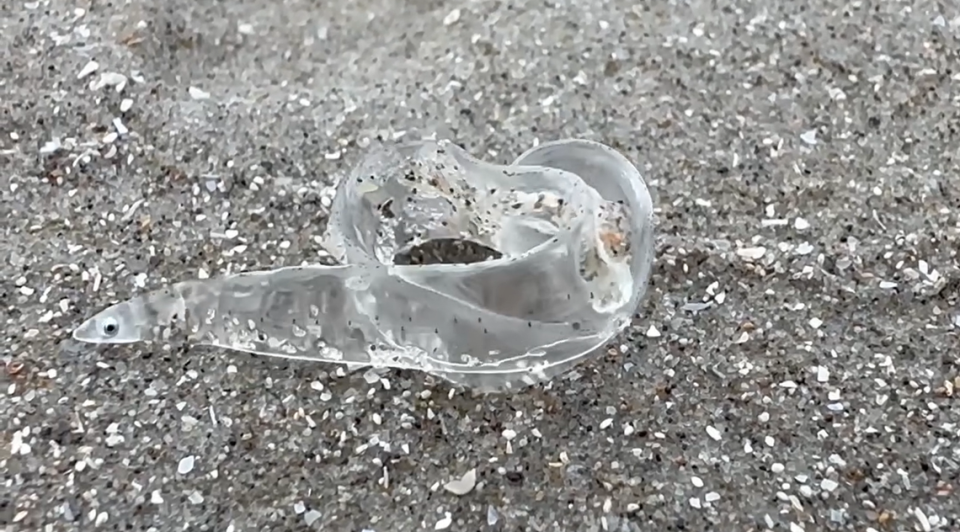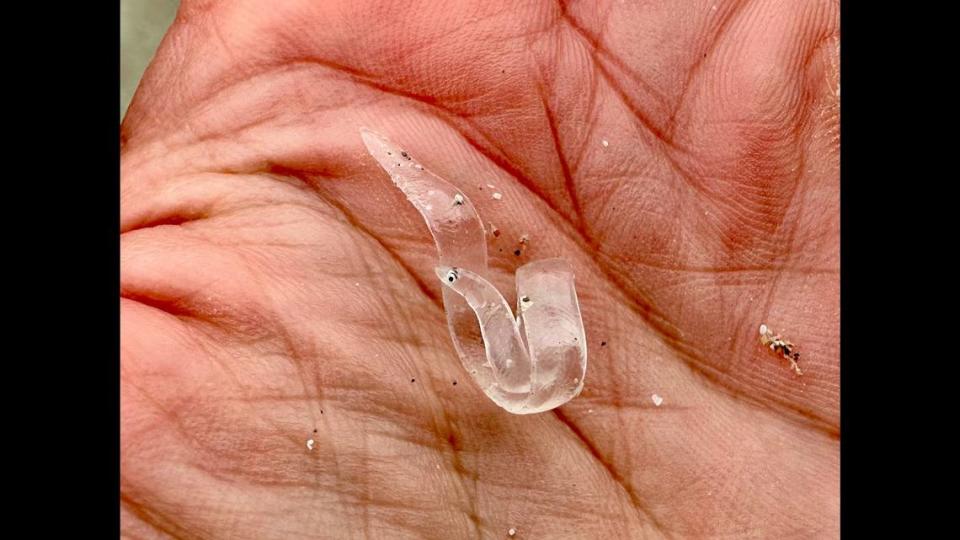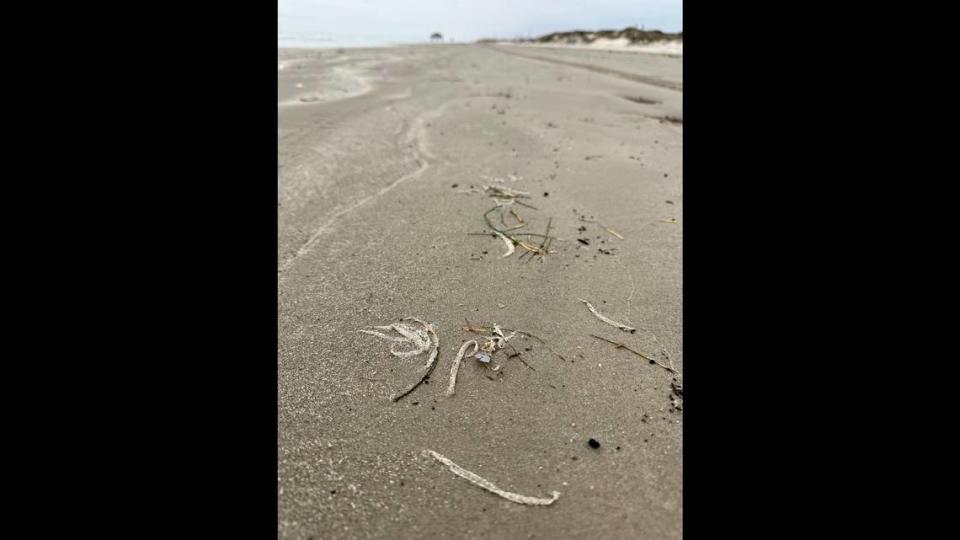Transparent creatures with gazing stare litter Texas coast in ‘rare’ event, photos show
Squirming creatures with long, transparent bodies and piercing little eyes are appearing in huge numbers on Texas beaches, photos show.
Researchers say the critters started washing up in late January, and have been found writhing around in the sand along a 70-mile stretch of Padre Island.

Exactly how many there are isn’t known, but they number in the thousands, Jace Tunnell, director of community engagement for the Harte Research Institute for Gulf of Mexico Studies, told McClatchy News in an email.
The see-through sea dwellers appear completely empty inside except for a pair of small eyes peeping out from their equally tiny heads, video shared by the institute on Facebook shows.

The creatures are a type of leptocephalus, according to Tunnell, a fish larvae named for its proportions — tiny head, slim body. But to see so many all at once and out of the blue is strange and exciting, he says.
“We have not seen this many leptocephalus larvae wash up on the beach before so we would say this seems to be rare,” Tunnell said. The institute believes recent cold weather could be to blame, he added.

Tunnell took a few squirming volunteers to an institute lab and learned they’re likely eel larvae, though it’s not clear what kind.
“We are always amazed at what we find washing up along the beaches during our weekly beach surveys,” Tunnell said.
‘Practically invisible’
“Being transparent at this life stage definitely help the animal avoid predation. As mentioned, the entire animal is practically invisible except for the eyes,” Jason Williams, a marine research specialist with the institute, told McClatchy.
The adaptation is more than skin deep, according to Williams, as even at the larval stage, these eels-to-be have “small developing organs” that are also invisible.
It’s a life-saving trick, and the larvae need every advantage they can get in order to survive. Very few do, according to Williams.
“Generally speaking, salt water eels can produce several million eggs during one spawning event … (and) aggregate spawners like eels exhibit little to no parental care,” Williams said, and as a result, only two out of every 100 larvae survive on average.
Padre Island is about 170 miles southeast of San Antonio.
‘Gator popsicle’ spotted in frozen pond as frigid weather chills Texas, video shows
Massive eagle nest spotted in West Texas amazes wildlife officials. ‘I mean golly’
Eerie ‘witch bottles’ are washing up along Gulf of Mexico. It’s best not to open them

